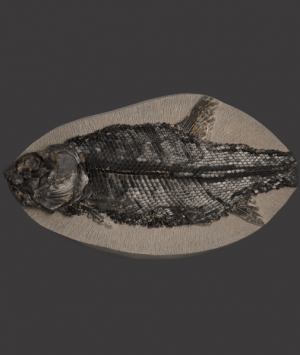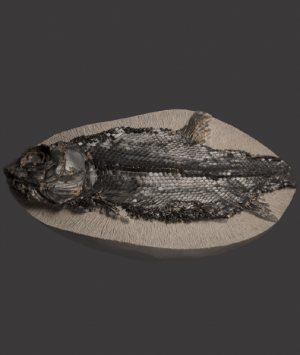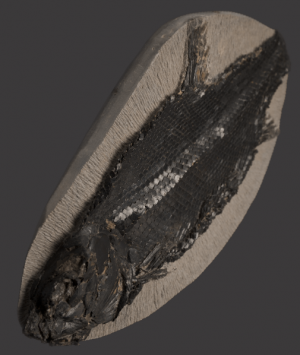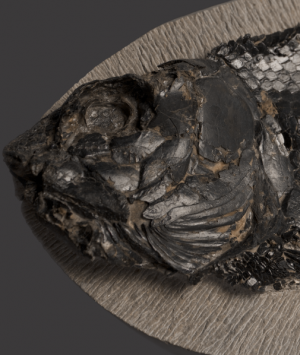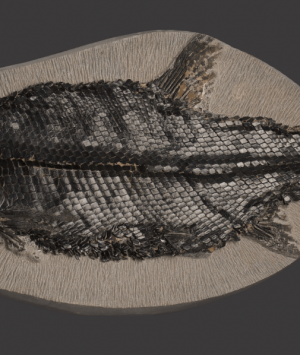Item number: 4163
A Rare British Fossilised fish, ‘Eugnathus Orthostomus’
Lower Jurassic Period, Approximately 190,000,000 Years Old
Discovered at Charmouth, Dorset
Ex English Private Collection
Although their origin was initially misunderstood, the naturally preserved remains of once living organisms known as fossils have been collected and valued by mankind for thousands of years. Throughout early history their mysterious existence was commonly explained by legends and folklore, often leading to widespread belief that they possessed supernatural or medicinal powers, a legacy which endures among some to this day. In more recent history, before their true nature and significance was fully comprehended, fossils were explained by the clergy and enthusiastically accepted by much of society as evidence substantiating the ‘Great Biblical Flood’.
For inestimable years, fossils had been collected and sold as simple ‘curiosities of nature’, however by the advent of the 19th century interest in collecting and seriously studying them was increasing.
The crumbling ‘Lias’, cliffs belonging to the Dorset seaside town of Lyme Regis and its neighboring village of Charmouth became particularly famous for fossils and its association with pioneering collectors, most notably, Mary Anning. Her spectacular discoveries and remarkably insightful recognition and interpretation of them, were instrumental in enabling eminent scholars of this emerging science to make their achievements. It is thought that the tongue twister, “She sells sea shells on the sea shore”, was invented in reference to her.
Few places can lay claim to such a unique heritage, so inextricably linked to geology and the historical science of palaeontology, as Lyme Regis and Charmouth, they are unquestionably worthy of the profound reverence in which they are held among scholars and enthusiasts of these subjects, both past and present. The diverse range of beautiful, Lower Jurassic fossils found there are often exceptionally well preserved, as such they are regarded as among the finest in the world and have become particularly prized by collectors. Today the area is a ‘World Heritage Site’ and designated site of ‘Special Scientific Interest’, (SSSI).
Both LymeRegis and Charmouth are famous for the exceptional fossil fish which have been discovered there, the overwhelming majority of all known species are of very ancient lineage, their bodies appearing almost as they did in life, owing to their distinctive, protective covering of heavily armoured, glossy scales attesting their ancestry.
Vertebrate remains such as this magnificent fish specimen are extremely uncommon finds from the Dorset ‘Lias’, It is very well preserved and has been revealed from within a hard nodular limestone matrix with the use of acid preparation techniques.
Dimensions (Approximate)
Matrix: Length: 33.5cm, Width: 19cm, Depth: 6.5cm
Fish: Length: 33.5cm, Width: 15cm (At widest point)

